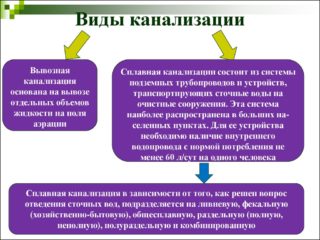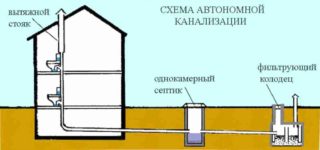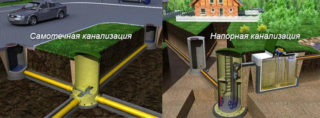Sewerage systems are designed to eliminate pollution that is formed in the process of human and animal life, the work of industrial enterprises, and precipitation. To choose the right complex for a house or an industrial building, you need to know the features of all types of transportation and waste treatment.
Classification by purpose
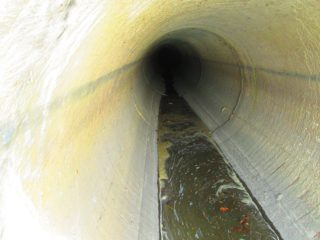
There are three classes of sewerage systems:
- K1 - Household (household fecal). Removal of pollution associated with human activity. Household sewerage can be local, that is, it is equipped in a specific building, and centralized - citywide.
- K2 - Stormwater. Removal of water from the surface formed due to rain and snow. This includes the drainage system, which is necessary to remove excess subsurface moisture.
- K3 - Industrial (production). Collection and cleaning of effluents in industrial complexes, food service factories, medical and pharmaceutical institutions.
The main function of storm drains is to collect and drain rainwater to protect the foundations, walls and roofs of houses, asphalt surfaces. The streams are directed through the highways into the accumulator, and then they are discharged into water bodies or onto the soil, since they are not dangerous for the environment. In private households, they water garden plantings.
Drainage-type sewerage systems are installed where subsurface sources are located high to the surface and threaten with waterlogging of the soil. Special perforated drains are deepened into the soil, which absorb moisture. It is then transported to drain pits, ditches or wells.
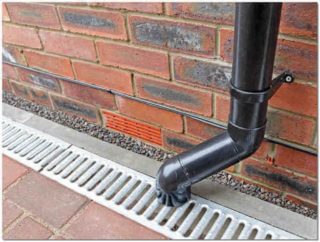
When creating a utility network, it is taken into account that the drainage lines from the plumbing are equipped with hydraulic locks to prevent air from entering the outside. These pipes are connected to risers through which the drains go to the central network or purification device. Risers are usually made of pipes with a cross section of 100 mm, connections to plumbing fixtures - 50 mm.
When two or three types are combined in one complex, the system is called combined. In residential and public buildings, household and storm sewers are usually provided. The enterprises use sewerage systems of all types - K1, K2 and K3, but with separate drains. Do not mix liquids with different composition, temperature, aggressiveness.
Cable duct is considered separately. It is used to protect telephone and electrical wires from soil overloads, rain and snow, as well as for the convenience of repairs. The channels are created in such a way that there is no need to open the ground and destroy the asphalt pavement.
Sewerage types by localization
- plumbing fixtures and sinks;
- bell-shaped lines;
- connection elements;
- inspection hatches and wells.
The outdoor complex includes a pipeline and sewage treatment devices located outside the house, on the street. This system is subdivided into three types:
- general alloy, where any wastewater leaves in one stream;
- separate, in which storm, industrial and household drains have their own outlet;
- semi-separate, where the outlets for wastewater are separate, but they are merged into a single reservoir or treatment system.
A common sewage system is often used in small private houses. In enterprises, only a separate system is used.
Types of local sewerage
- Cesspool. The cheapest sewerage facility. Consists of a plastic container or a pit with brick or concrete walls. A pipeline with a certain slope is brought to the tank. The disadvantage of this system is fast filling and frequent pumping of waste water.
- Dry closet. The device is often installed by summer residents, since it does not require excavation and installation work, and the booth itself is easy to acquire. Microorganisms are used to clean the faeces. This is the minus of the design - biological products must be purchased regularly.
- Septic tank. The most popular construction for private houses. Efficiency in wastewater treatment up to 80 percent is achieved due to biological products. A septic tank usually includes several chambers - sealed and with a drained bottom. It is more expensive than previous devices, but quickly pays for itself through minimal operating costs.
The best stations are considered to be deep biological treatment plants - expensive complexes consisting of several devices. They provide high-quality clarified water up to 98 percent.
Separation according to the method of wastewater disposal
The main advantages of the system:
- inexpensive and easy installation;
- ease of maintenance;
- energy independence.
The disadvantage of the sewage type of sewage system is that it will not be able to function normally if the treatment plant or storage is located far from the house or summer cottage.
The slope of the line depends on the length and section. On average, it is 1–3 cm per running meter of the pipeline. If the slope is completely invisible, the drains will not be able to leave quickly, and congestion will form. A large slope will lead to the deposition of fatty deposits on the pipe walls, which will gradually reduce the conductivity of the system.
The second type of autonomous sewage system is pressure. It is installed in areas where the storage tank is located above the weirs in the building. This happens if you place plumbing rooms in the basement. Gravity with such a layout is impossible, you will have to connect a pumping device. Such systems sometimes include a cutter mechanism to shred hard waste such as paper.
Thanks to pressurized sewage systems, wastewater can be transported to remote treatment plants located at any height.
There is no need to worry about the number and shape of bends during the installation of the sewage system. The powerful pump will speed up the movement of drains, and they will not get stuck when cornering. The disadvantages of a pressure head sewer system include volatility. It is unprofitable to install it in private houses where there are problems with the supply of electricity.
The choice of a sewerage system for a private house or industrial complex is determined by the purpose of the structure where the highway will be laid. The type of plumbing equipment, the depth of the external sewerage network, the composition of wastewater and the possibility of their reuse, the layout of individual devices and units are also taken into account.

